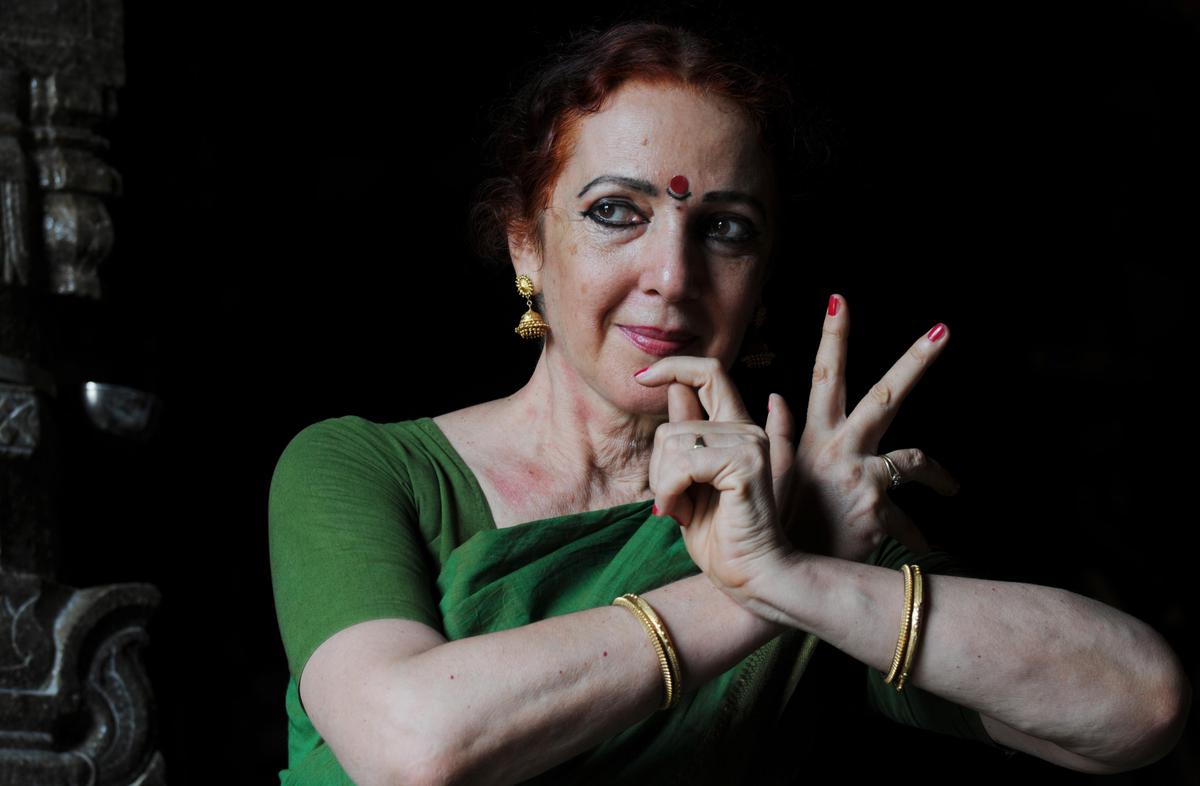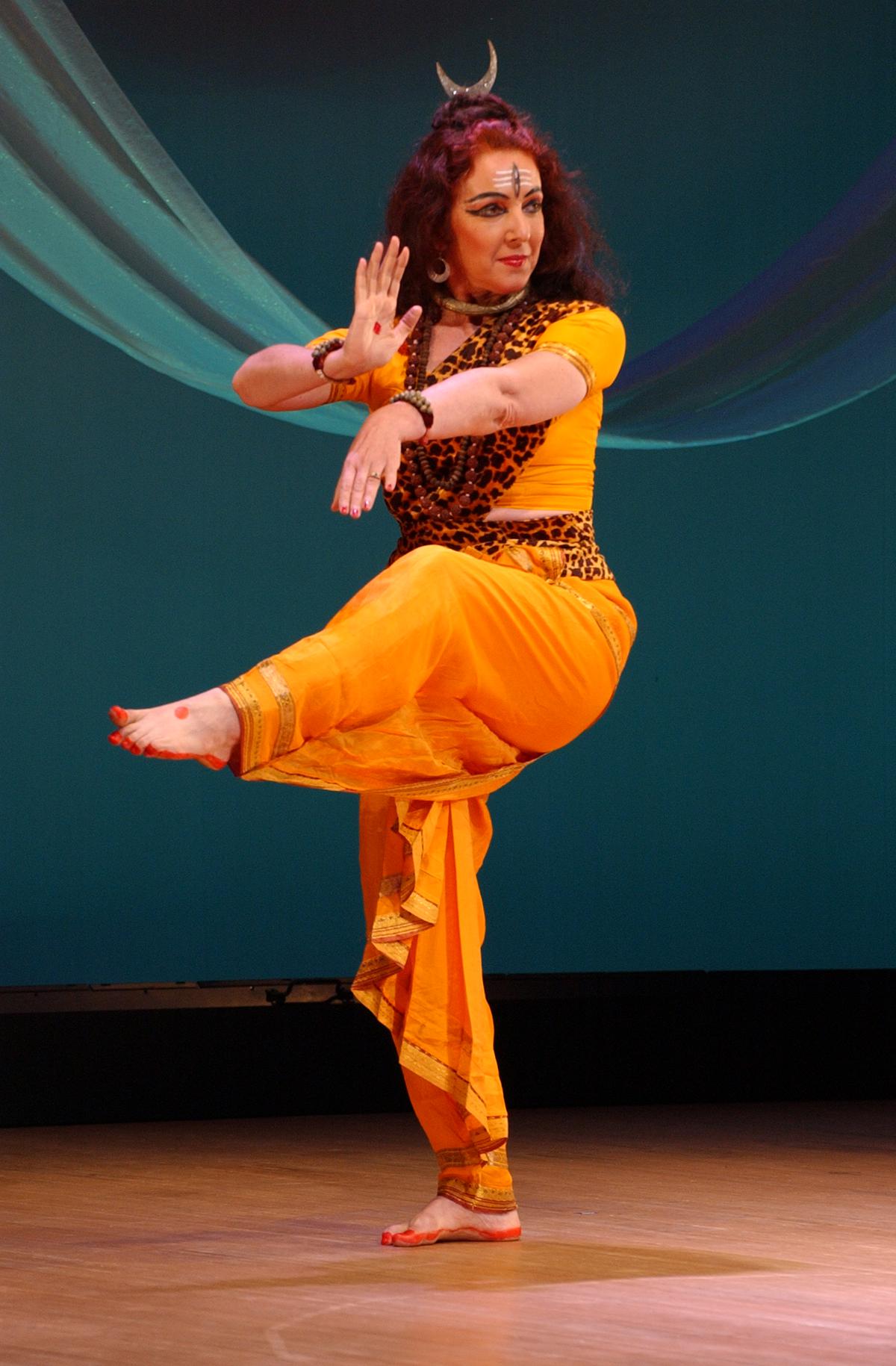A young Ileana Citaristi during an earlier performance.
| Photo Credit: The Hindu Archives
Italian by birth, Ileana Citaristi has been living in Odisha since 1979 in close contact with the people, language and culture associated with the dance form she is passionate about. She took to Odissi after practising traditional as well as the experimental theatre in Europe. Ileana has performed across the globe as an Odissi and Mayurbhanj Chhau exponent. She has been conducting workshops, writing on dance and working on documentaries to popularise the art forms.
Sitting in her aesthetically designed house, overlooking lake Bindusagar in Bhubaneshwar, Ileana describes the joy of finding herself in dance and how it helped her find a home away from home.

Odissi dancer lleana Citaristi at Perur Patteeswara Temple in Coimbatore on September 20, 2015, as part of Natyanjali dance festival.
| Photo Credit:
SIVA SARAVANAN S
How did you decide to make Indian classical dance your calling?
I first came to India in 1978 to learn Kathakali in Kerala for three months because I wanted to include some of its movements in my theatre work. I came back the very next year with the same intention — to stay in Odisha for six months to learn Odissi. After meeting guru Kelucharan Mohapatra, six months became six years. Finally, I decided to stay on forever.
You have settled in Bhubaneshwar. What made you make the city your home?
I was in Cuttack for 11 years. I moved to Bhubaneshwar only because guruji had also shifted. Initially I did not like the city much. I was missing Cuttack. But once I knew Odissi was going to be a lifelong pursuit, I purchased a land in the old part of the City near Bindusagar lake and built a house-cum-studio and a dance hall.

Ileana Citaristi performing Shiv Tandav. She learnt the popular piece from her Chhau guru, Sri Hari Nayak.
| Photo Credit:
Photo courtesy: Ileana.
artvisionindia.com
How was it training under guru Kelucharan?
I was lucky to get the best gurus for both Odissi and Chhau. Kelubabu was a taskmaster, for whom only perfection mattered. He was able to clarify all my doubts because he was the creator of what he was teaching. He was extremely creative and at the same time was always keen to discover and learn new things. There was so much to imbibe from him. My Chhau guru Sri Hari Nayak was always ready to teach and share his knowledge without expecting anything in return. He was proud of me since I began to be known for the Shiva Tandava piece that he gained expertise in as a young dancer.
How different is Mayurbhanj Chhau from Odissi?
I think the two forms are complementary to each other. They are both from the same soil and their basic stance, the tribhangi as it is called in Odissi and dharan in Chhau, is based on the same triple bending of the body. But the purpose for which the two styles were developed is different. Odissi was meant for the closed enclave of the temple as a form of prayer to Jagannath whereas Chhau was seen as a way to keep the body fit for battle and was practised in the open space of the akhadas in the villages of Odisha. One can acquire strength and a sense of balance by learning Chhau, and grace and a sense of rhythm from Odissi.
Where do you see the classical arts in the present scenario?
There’s now renewed enthusiasm with more youngsters taking to classical arts. They bring with them new ideas and a contemporary sensibility, which are essential for a tradition to evolve.
You are also known for your enriching and well-designed workshops. Are they a way to reach out to youngsters?
Nowadays a lot of children are sent to learn dance by parents just for the sake of it. There is no proper motivation or knowledge about the training involves. Some of them discontinue unable to handle art and academic pressure. I would like the parents to be more involved in the process so that they can encourage the children in the right way. Classical dance is a complete system of education, it does not relate only to body movement. It includes study of literature, music, mythology and philosophy. Unless there is proper understanding of its value , there is no point in wasting time learning it.
Tell us about your current choreographic work.
Usually, I present a new choreography every year at the Sangam festival held from September to October. My last choreography was on the art of weaving in relation to the texture of life. It was called ‘Suta – The Thread’. I am in search of a new subject. You need to get inspired by something to create. So I am looking around for that inspiration.